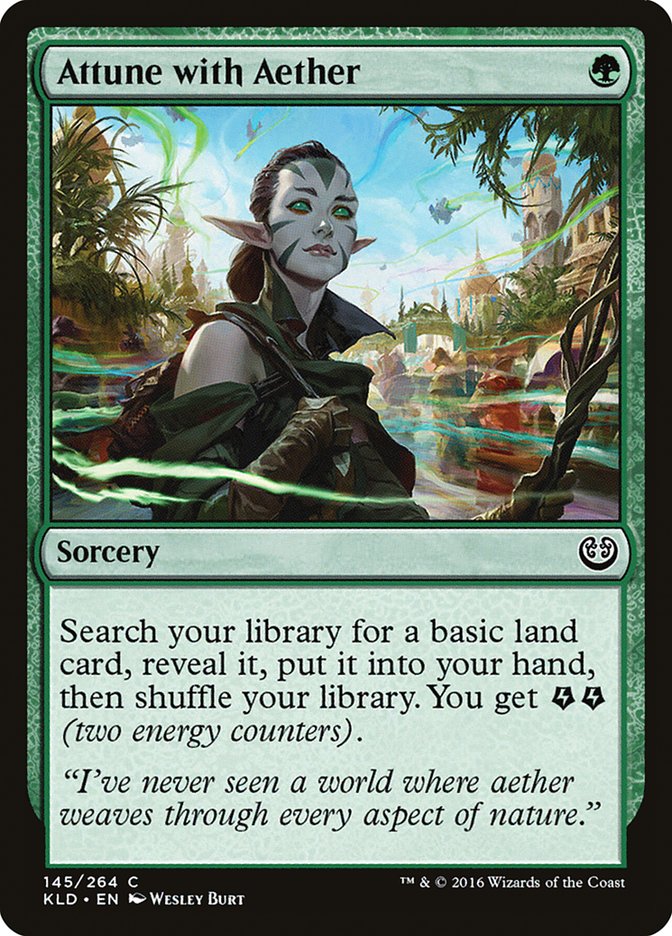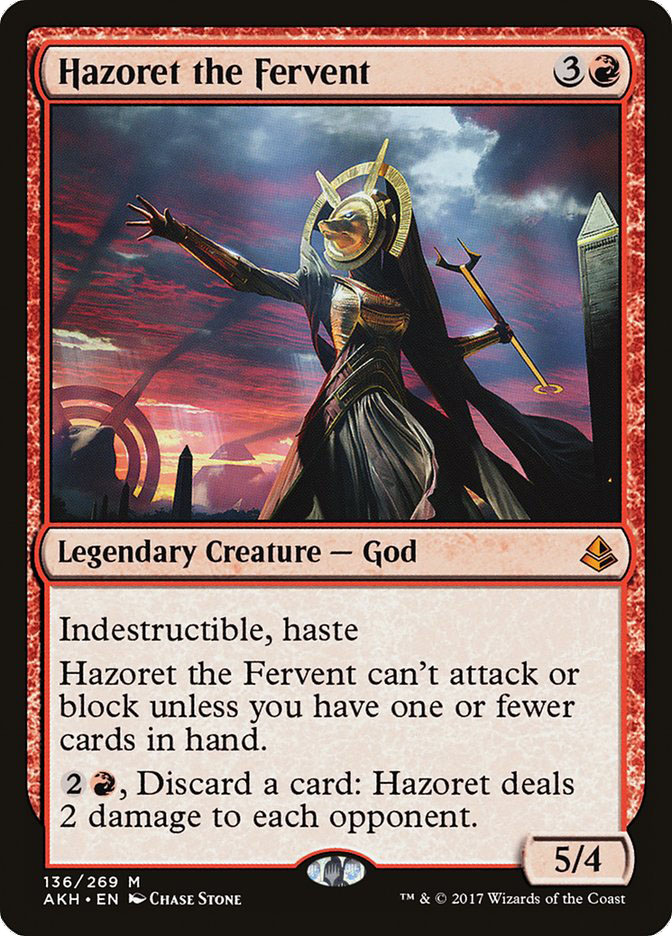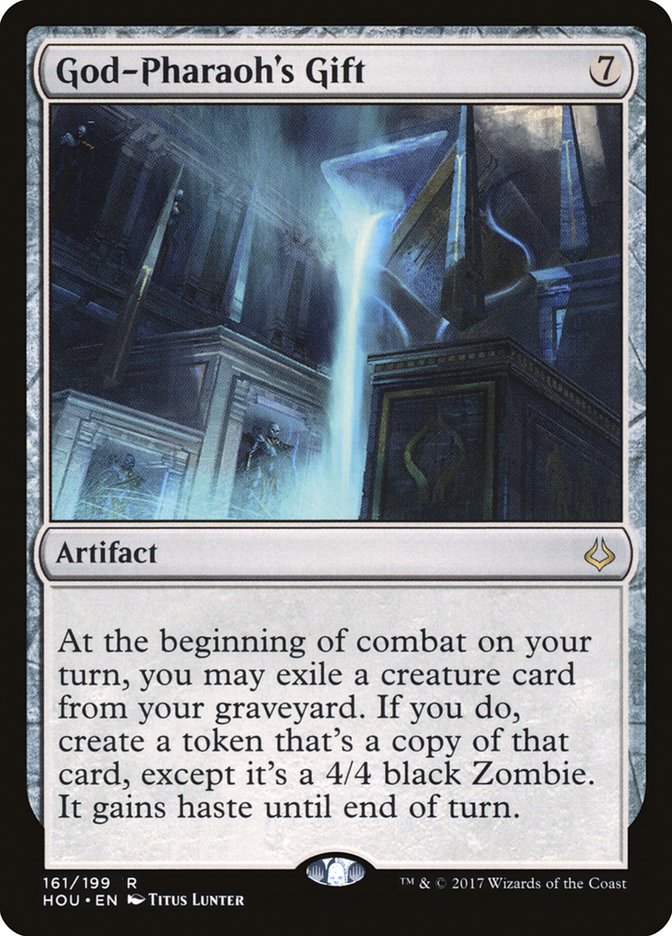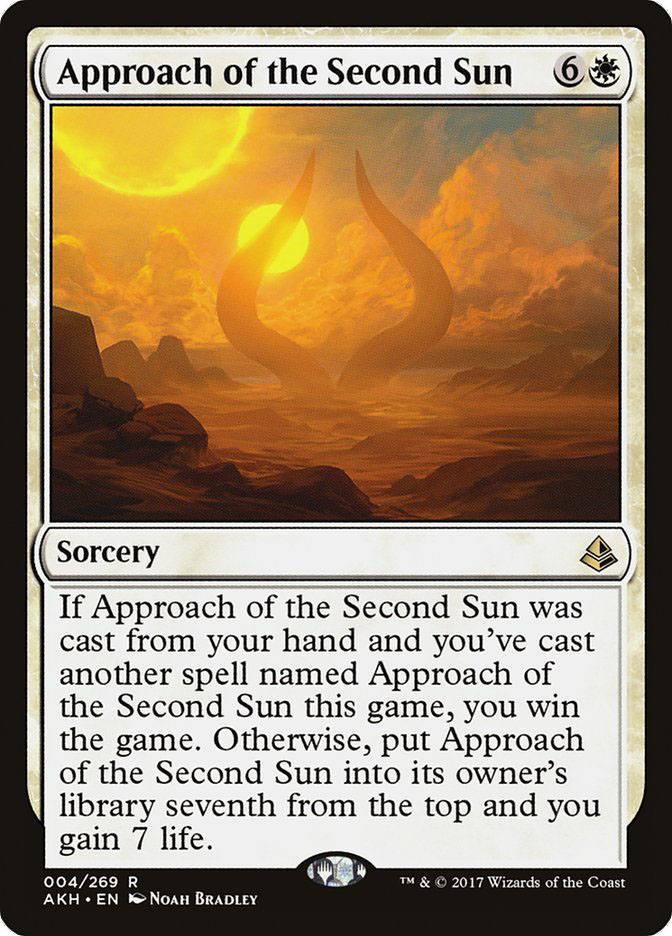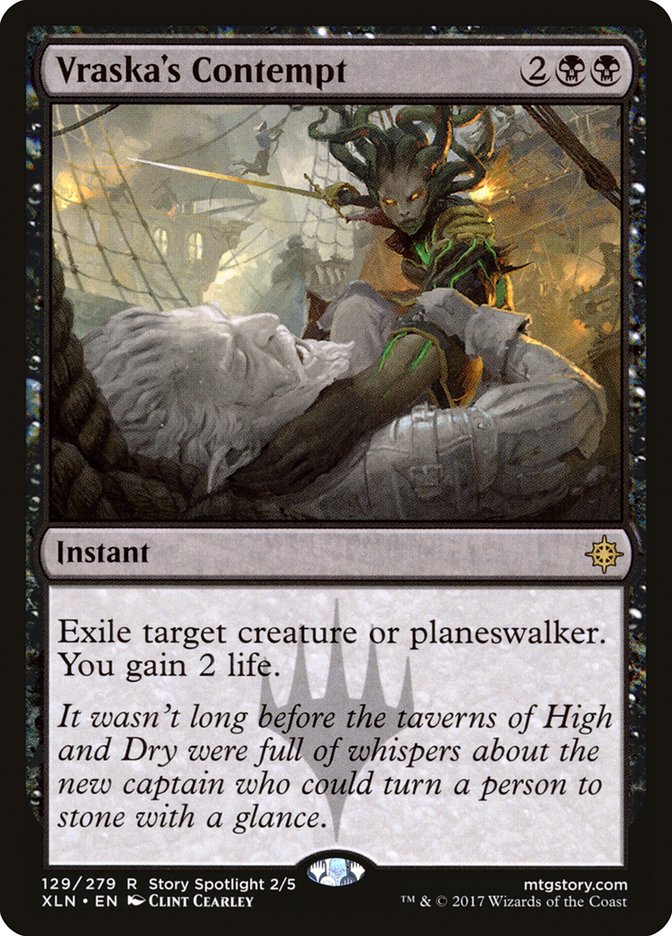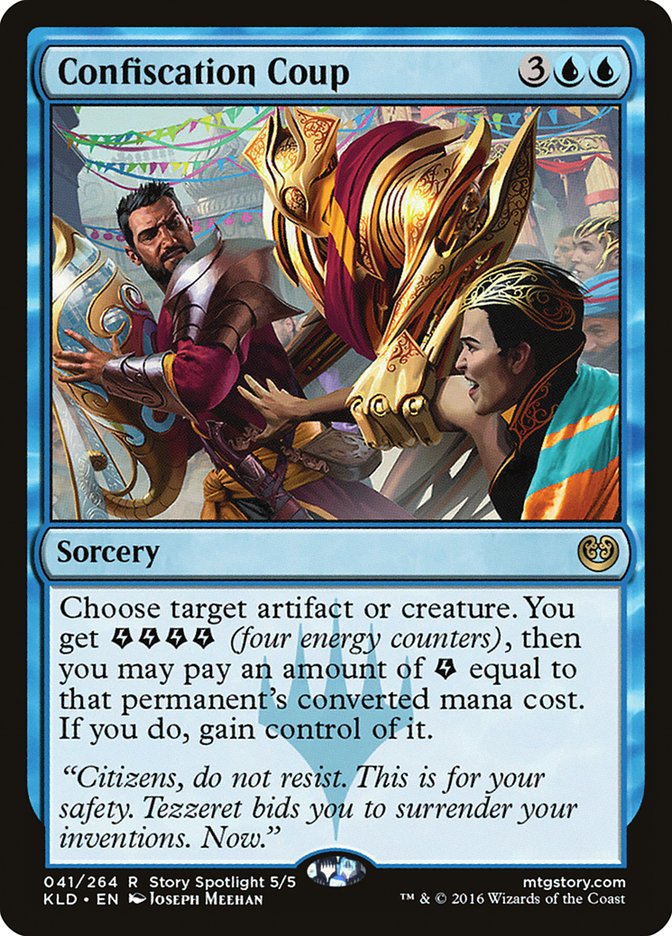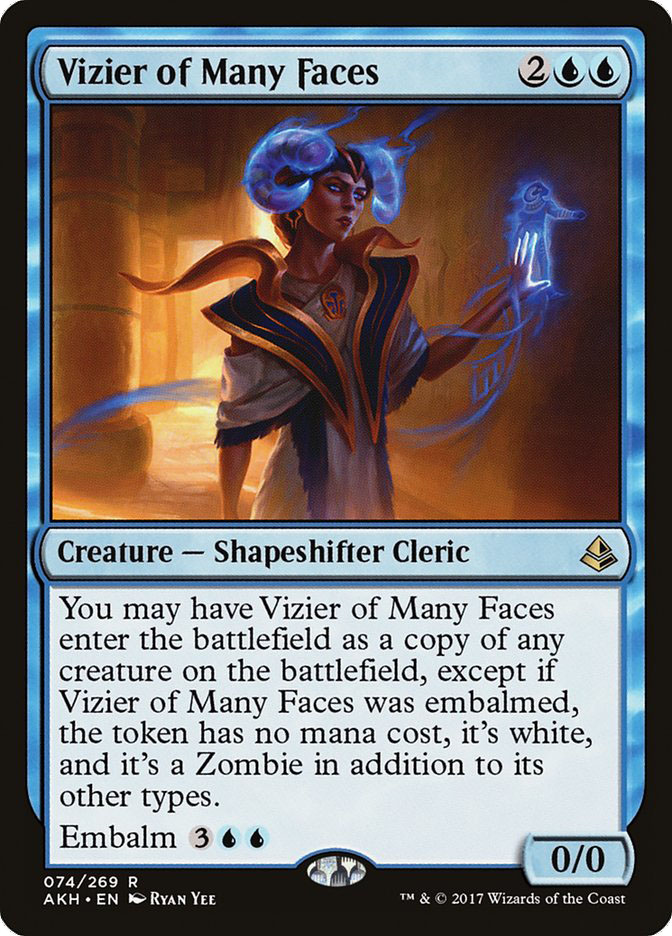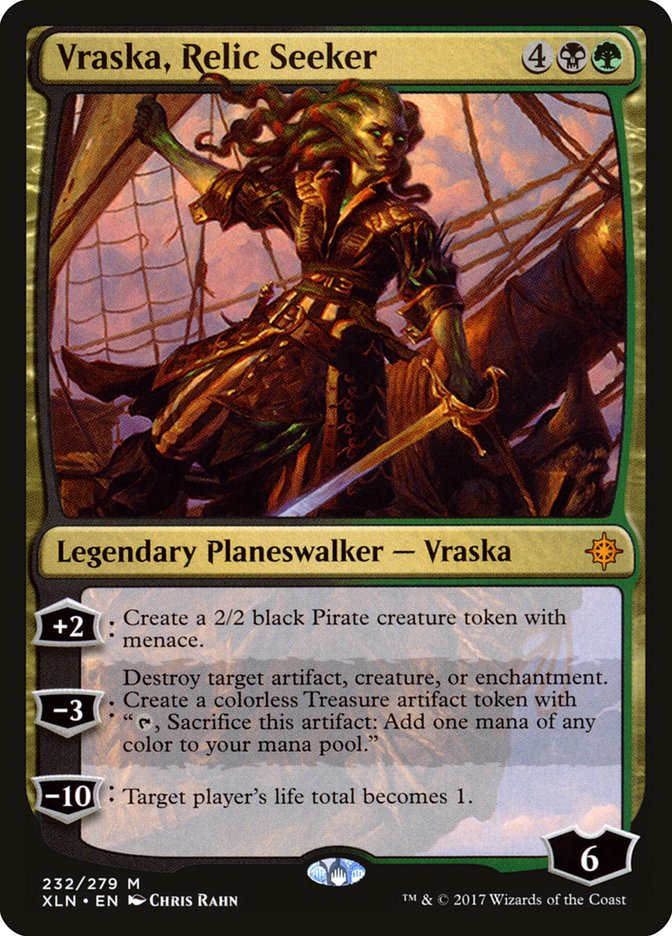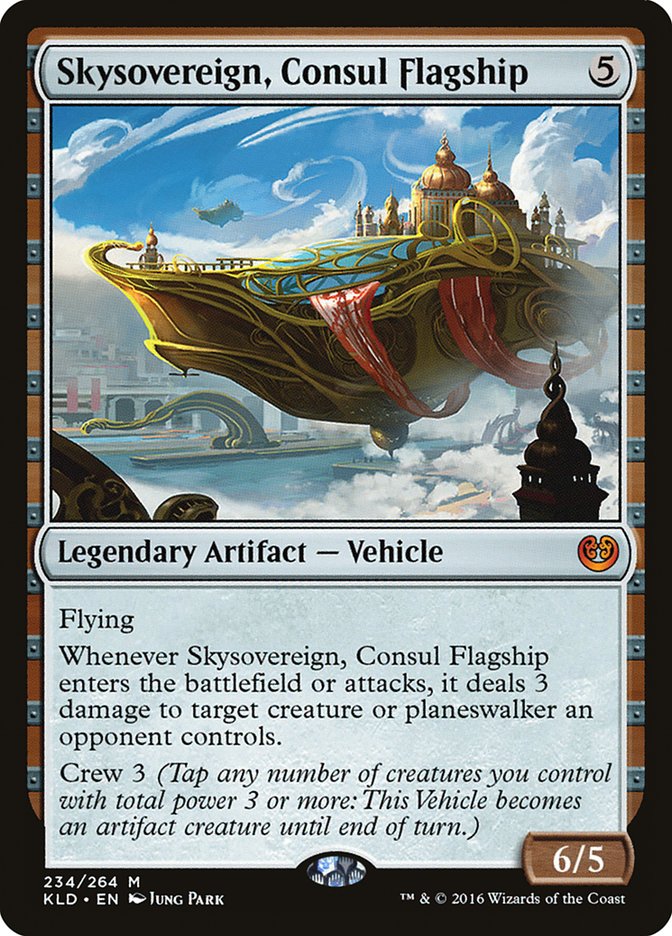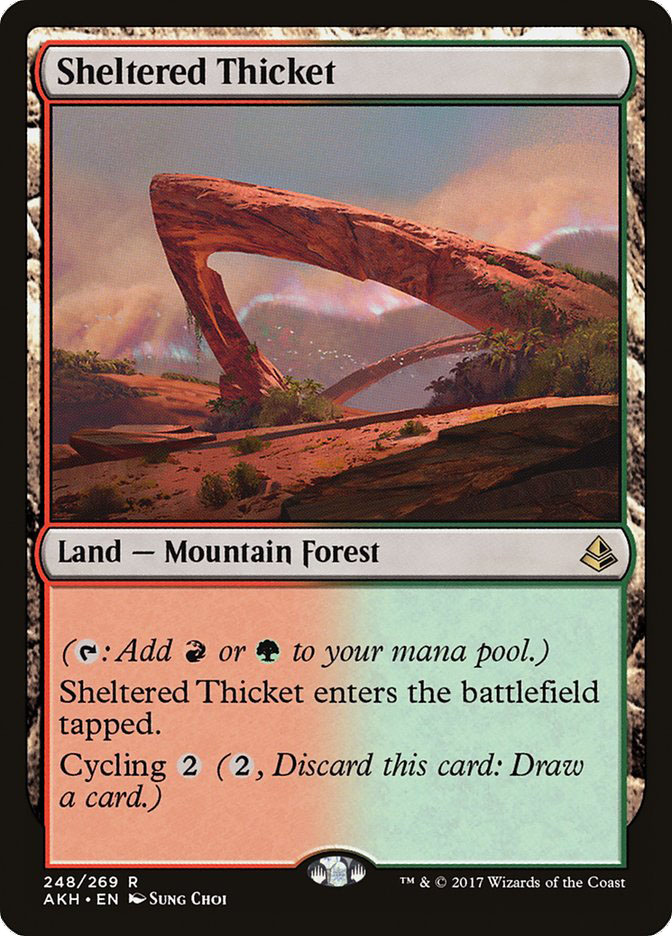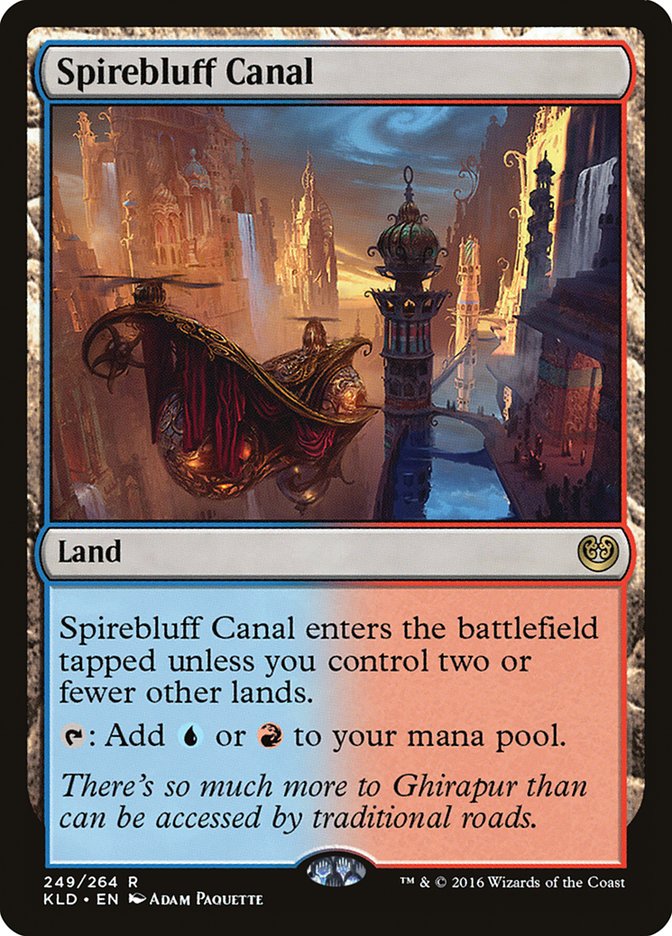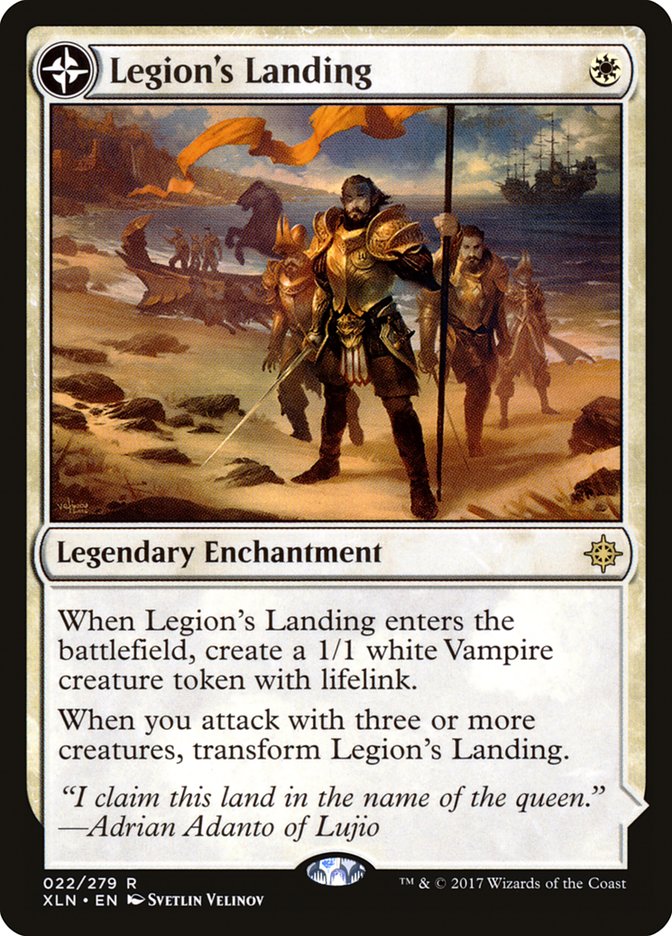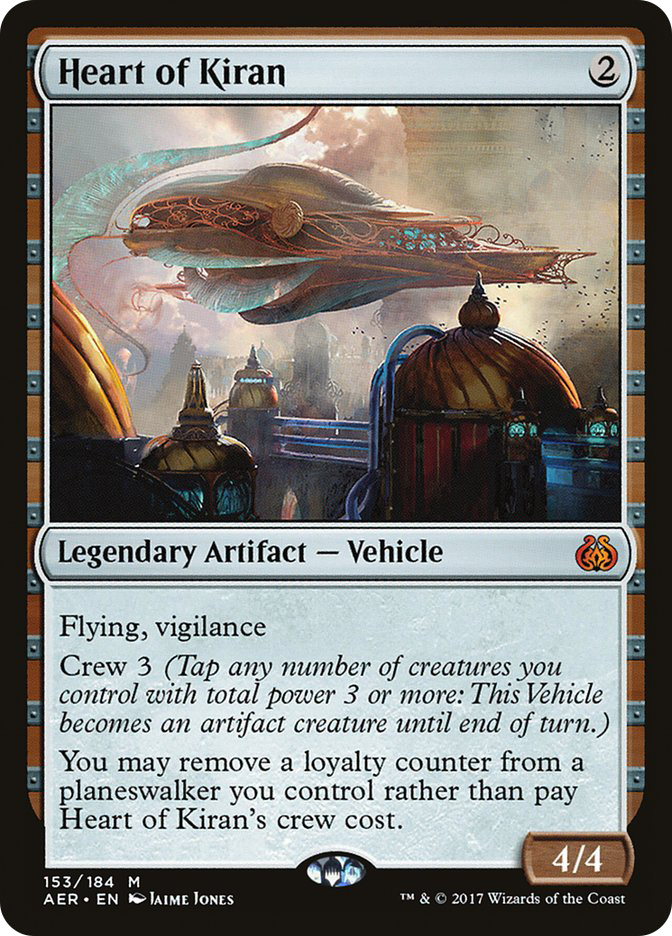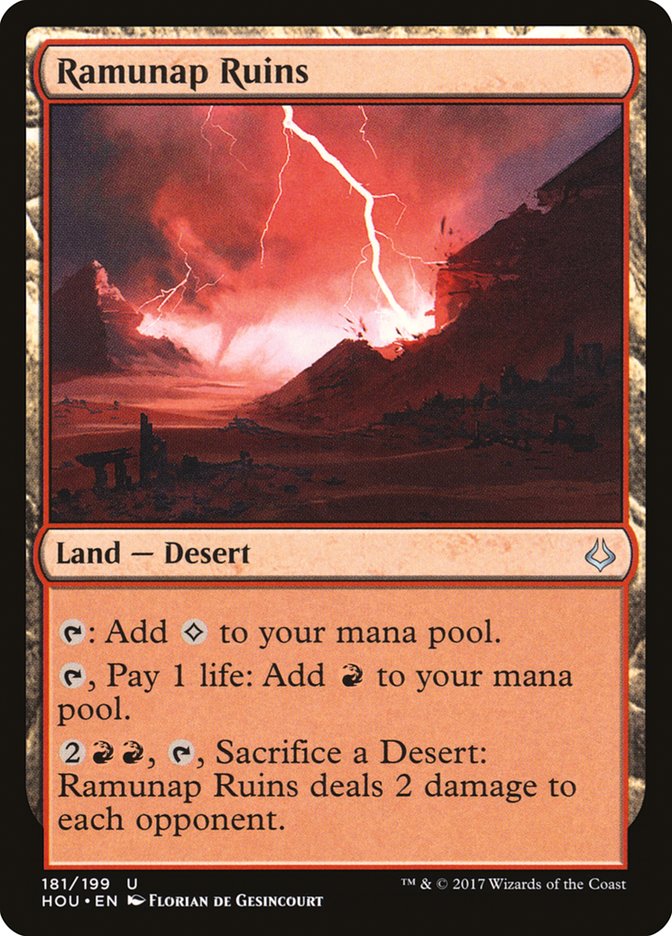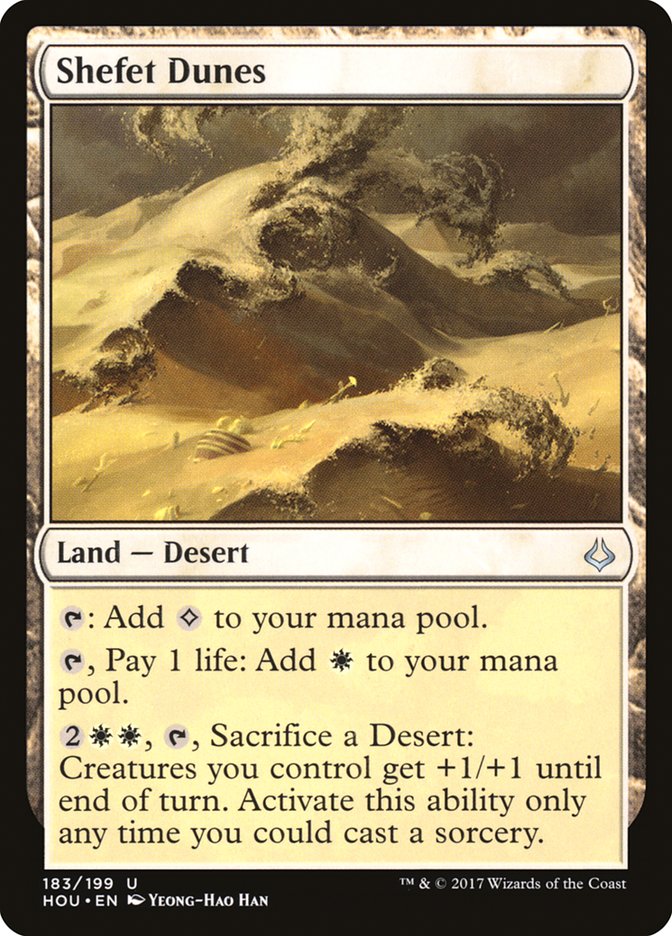This one’s easy: Seth Manfield.
Well, kind of. Seth got the lion’s share of the money and pro points, but there were other prizes on offer at Pro Tour Ixalan. Because this Pro Tour was the first in recent memory to occur so long after the set’s release, the stakes for the Standard format were far different from what we’re used to.
We had our terms of engagement set. Between the SCG Tour stop in Dallas that opened Ixalan Standard, the World Championship, various Nationals tournaments, and several weeks’ worth of Magic Online results, we had more than enough data to known what to expect going into Pro Tour Ixalan.
Temur Energy was the big bad going into the Pro Tour. Whether the black splash for Scarab God was worth it or not was under debate, but you would have been hard pressed to find anyone who didn’t think Temur-based Energy midrange decks would be the most played strategy at Pro Tour Ixalan.
Ramanup Red was on the decline, written off by many after being the worst-performing deck at the World Championship. Search for Azcanta Control was all the rage after the World Championship, but word on the street was that the deck was losing its luster now that it was a known quantity.
We even knew about the rogue decks. Sure, there were a few different ways you could build around God-Pharaoh’s Gift, several of which had seen some small degree of online success. Approach of the Second Sun was the other way to build control decks, and the strategy had more than its fair share of vocal adherents.
All in all, we knew far more about this Standard format going into its Pro Tour than we have in a long time. Instead of creating the raw shape of the Standard format, Pro Tour Ixalan refined it.
This Pro Tour created winners instead of champions. Instead of bursting onto the scene in a blaze of glory, decks and cards meekly gained ground in the format. One-ofs became three-ofs, sideboard cards moved to the main deck, and good matchups became great. The aftermath of Pro Tour Ixalan will be quieter than we’re used to, but no less important to analyze for all of that.
Planeswalkers (and other non-creature threats)
One of the big stories from the World Championships was how far the stock of Chandra, Torch of Defiance had fallen. She went from a star player in Temur Energy in the tail end of Hour of Devastation Standard to a mostly benched one- or two-of at the World Championships. Normally, when sets rotate, the powerful cards that remain are supposed to improve on their metagame share, not fall almost entirely out of favor. What happened?
Let’s start with the clean answer. Ixalan saw the printing of a clean answer to the planeswalker card type. No longer was a resolved Chandra a huge problem for an opposing control deck and something that you could count on to stick around for a few turns. Now you risked spending all sorts of time and energy to create a hole to resolve your Chandra, only for her to be easily answered by your opponent.
Further, the decks where she was easy to defend disappeared. Chandra was best in the midrange matchups where you could plus her to cast a Harnessed Lightning on their only threat and be up a planeswalker on five loyalty to nothing. With Ixalan, those decks fell out of favor. For the most part, Temur-based Energy itself was the only midrange matchup left, and defending Chandra against Whirler Virtuoso and Glorybringer is no small task.
Fast forward to Pro Tour Ixalan and Chandra, Torch of Defiance’s stock had risen greatly. Many lists had her as a three-of again, while others upped her to a two-of with more in the sideboard. Either way, that’s a marked increase from the scant play she saw at the World Championships. And yet nothing changed to invalidate the previous arguments against her.
Well, while we mull over that quandary, let’s take a step back from Chandra for a second. We already talked about how Temur-based Energy was the easy pick for most popular deck going into the Pro Tour. If you wanted to play Temur yourself, how could you gain an edge in the mirror?
Well, sure. The Scarab God is the prime motivation to splash black, and the prime motivation for The Scarab God is to have an edge in the Energy mirror. But this was a known quantity going into the event. What else could you do, and how could you beat people looking to beat you with The Scarab God?
Confiscation Coup is the easiest, best answer available to The Scarab God. And sure enough, play of Confiscation Coup was way up at Pro Tour Ixalan, with many Temur pilots opting to play two copies in their maindecks. Vizier of Many Faces, on the other hand, was the talk of the community in the days before Pro Tour Ixalan. It was debuted as an answer for Carnage Tyrant out of control, but we soon came to realize it could also help you dominate midrange mirrors.
So The Scarab God is known and expected. The Level 1 responses are Confiscation Coup and Vizier. What’s Level 2?
Easy: play threats that aren’t creatures. Moving to a less creature-reliant strategy for the mirror neatly sidesteps both The Scarab God and the known answers to The Scarab God. The planeswalkers might not line up as perfectly as we want them to, and they might have some iffy interactions, but we can forgive them, since they’re creating plenty of not-great interactions for our opponents. Skysovereign, Consul Flagship saw a lot of play in successful Temur lists last weekend too, and for much the same reasons.
Playing an abundance of planeswalkers also solves all the issues with Chandra we were talking about before. Sure, it’s hard to defend a Chandra in the mirror. But if you cast a Vraska, Relic Seeker right after deploying a Chandra? There’s no way they have enough Thopter token chip shot damage to realistically pressure both of your planeswalkers. Have you seen how much loyalty Vraska has?
Similarly, if you just jam planeswalker after planeswalker against control, eventually they will run out of clean answers and find themselves in quite the pickle. Nissa, Steward of Elements saw quite a lot of play in Temur sideboards at Pro Tour Ixalan, and I imagine a good deal of her role was to contribute to this “planeswalker fatigue” effect of running so many planeswalkers.
Before moving on, let’s briefly talk about who the big loser in the rise of planeswalkers was:
Sorry, Glorybringer, but we had to make room for all these Vraskas and Chandras and Skysovereigns somewhere. It’s interesting that the best anti-planeswalker card in the Temur deck was shaved to make room for more planeswalkers. I would imagine that we haven’t quite seen the end of this fight.
Lands Other Than Basic Forest (Primarily Spirebluff Canal)
I struggled for a while with how I wanted to word this point, so bear with me. Originally, I wanted to claim that Rootbound Crag had gained substantial ground over Sheltered Thicket in Temur lists, based on my impressions from watching the Constructed rounds on Day 2 of the Pro Tour. After the lists were released, I dove into the numbers eager to verify my intuition.
Well, it was not to be. The numbers just weren’t there to support my claim. Sure, it looked like Rootbound Crag was seeing marginally more play and Sheltered Thicket was seeing marginally less, but the difference in play from the World Championship was barely worth mentioning, let alone writing about.
Still, I was pretty sure there was something going on with the manabases of these Temur-based Energy decks, even if it wasn’t what I originally thought it was. Eventually, I figured it out.
At the World Championship, you wouldn’t catch a Temur-based Energy player dead without four basic Forests. Four Forests, four Attune with Aether, 52 cards to go. But at Pro Tour Ixalan, running three Forests was perfectly acceptable in both four-color and plain Temur versions of the deck. Not every Energy pilot played only three Forests, but most of the high-performing ones did indeed cut that fourth Forest.
All right, so why did this happen? What changed since the World Championship to make that fourth Forest lose so much popularity?
The obvious first question to ask in our quest for answers is what people played instead of that Forest. Honestly, the answer to that isn’t exactly clear-cut. The biggest gainer was probably Spirebluff Canal, which saw consistent three-of play in high-performing Pro Tour Ixalan decks that it did not enjoy at the World Championships. But a second basic Island also saw play in a couple of lists, and some of the four-color variants started playing a singleton Blooming Marsh.
My first takeaway here is that color requirements are stringent, and having multiple Forests on the battlefield can be quite the liability. You are substantially less likely to have three Forests on the battlefield if you only play three, after all. But this was true before, so what we’re really looking for is what changed to make color requirements more stringent than they were at the World Championships.
You could make a case for the aforementioned rise in popularity of Chandra, Torch of Defiance being the driving force behind this change, but I’m not buying it. Access to double red was already something these decks needed for Glorybringer, and playing a few more copies of Chandra didn’t drastically intensify this need. No, I think it far more likely that blue was the culprit, and the few cases of the second basic Island are strong evidence in favor of this theory.
My theory is that the importance of having double blue mana rose as the importance of being able to deploy a Rogue Refiner or Whirler Virtuoso while leaving Negate or Spell Pierce up became apparent. Playing against control decks necessitates strange play patterns. Developing threats while leaving countermagic up is important, and a lot of your best threats cost blue mana. Servant of the Conduit is an unreliable blue source in this matchup because it’s quite prone to dying, but even when it sticks around, you’d really rather be attacking with it.
Aggro Decks
So far we’ve seen the midrange decks cannibalize themselves with planeswalker packages for percentage points in the mirror and contort their manabases to up their post-sideboard game against control. You may notice that neither of these changes is good against aggressive decks. Indeed, it’s fair to say that both of these changes are actively bad against aggro. Given the state of the format going into Pro Tour Ixalan, a certain level of disrespect towards aggro strategies was certainly merited. But this level of disrespect created a hole that several Pro Tour teams and competitors looked to exploit.
The sheer volume of different aggressive strategies that were played at Pro Tour Ixalan is clear evidence that this hole was on the forefront of many players’ minds as they prepared for the event. Five unique aggressive strategies put five or more pilots into Day 2: Ramunap Red, B/R Aggro, Mono-White Vampires, Mono-Black Aggro, and Mardu Vehicles. G/W Aggro is also worth mentioning as the deck of choice of several members of Team CardHoarder Brazil, and thus chosen by a serious testing team.
Now, not all of these aggressive decks saw the same level of success. Many players looked to exploit the aggro-sized hole in the format, but not all of them succeeded. I think it’s safe to say that Ramunap Red was the most successful of the bunch, with second place going to either Mardu Vehicles or Mono-White Vampires, depending on how you look at it. The Vampires deck is an interesting case, as its sample size in the tournament was quite small, but its numbers looked very good.
So, what separated the more successful aggro decks from the ones that didn’t fare as well? In short: more creatures, more wins. Both intra- and inter-archetype, aggro lists with a higher permanent density did better. Of the non-Ramunap lists, Vampires played six noncreaturelike spells and Mardu Vehicles played seven. On the other side of things, Mono-Black aggro played ten and B/R Aggro played nine.
Ramanup Red lists played anywhere from ten to twelve. This might look like an aberration at first, but I think it’s fair to say that Ramanup Red is a special case. For one thing, unlike the other aggressive archetypes, its noncreature spells do damage to the opposition when need be. For another, it’s more or less on a higher power level. There’s a reason Ramanup Red has existed so long and it’s the same reason that it had so many more pilots than the other aggro decks. Comparing it to the other aggro decks isn’t really fair.
But if you restrict yourself to only looking at Ramanup Red lists, you can observe the same pattern within lists of the archetype. The lists with ten or eleven instants or sorceries outperformed the lists with twelve by a good margin. Once again, creatures herald wins.
With midrange decks preparing mostly for midrange mirrors, the success of heavy-creature aggro makes sense. Temur Energy relies on Whirler Virtuoso for swarm control; it can’t handle a wide opposition battlefield without access to a Whirler Virtuoso. By planning to swarm, you make yourself a heavy favorite in the games they don’t draw Virtuoso.
And when they do have Virtuoso, we still have a shot. Rampaging Ferocidon saw a spike in play last weekend for a reason. Part of why the Vampires deck was so good was that it was able to use Shefet Dunes and Angel of Invention to make Thopter tokens mere speedbumps rather than a battlefield-decimating defensive force.
Pro Tour Ixalan was awesome, and for me a lot of that awesomeness was how much subtler the innovation in this Pro Tour was compared to what we’re used to. Maybe it’d grow old, but I for one hope we see this Pro Tour timing happen again in the future.



